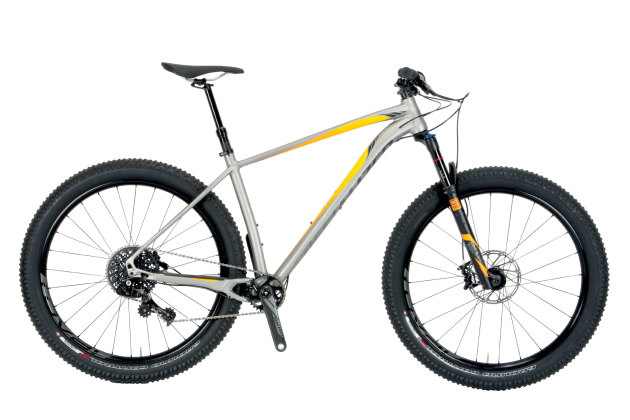Specialized Fuse Pro
It’s a crazy time in mountain bike land. We only just got over the acceptance curve for 29ers, then fat bikes came along and now 27.5. All this came in a short span of years, after literally decades of 26-inch tyres with relatively consistent widths.
We’ve learnt that bigger wheels can be good in some ways while wide tyres and rims can really change the ride experience. Both the changes in width and diameter have been aided by weight and strength advances that have come from new materials and better manufacturing processes.
So, it was only a matter of time (and very little time at that) before we were destined to meet the hybrid of hybrids; the middle size wheel with a not so skinny but not too fat tyre. There’s no common name for this yet; some call it ‘plus’ width while others call it semi-fat and Specialized has dubbed theirs 6Fattie in reference to the 650b rim and the larger than traditional tyre.
Specialized has jumped into this segment with both fattie sized feet. Our Fuse Pro is the top of three Fuse hardtails and the Stumpjumper FSR dually also has four fattie-sized models within their 2016 Australian line up including both alloy and carbon options. All have adopted the new ‘Boost’ standard hubs (that’s 110mm wide up front and 148mm on the rear) along with three-inch wide tyres. The rims are broader too, measuring at least 38mm wide internally and naturally the forks and frames grow in girth to accommodate the bigger wheels. Other than the white water rafting sized donuts of rubber, the remainder of the 6Fattie bikes look relatively normal.
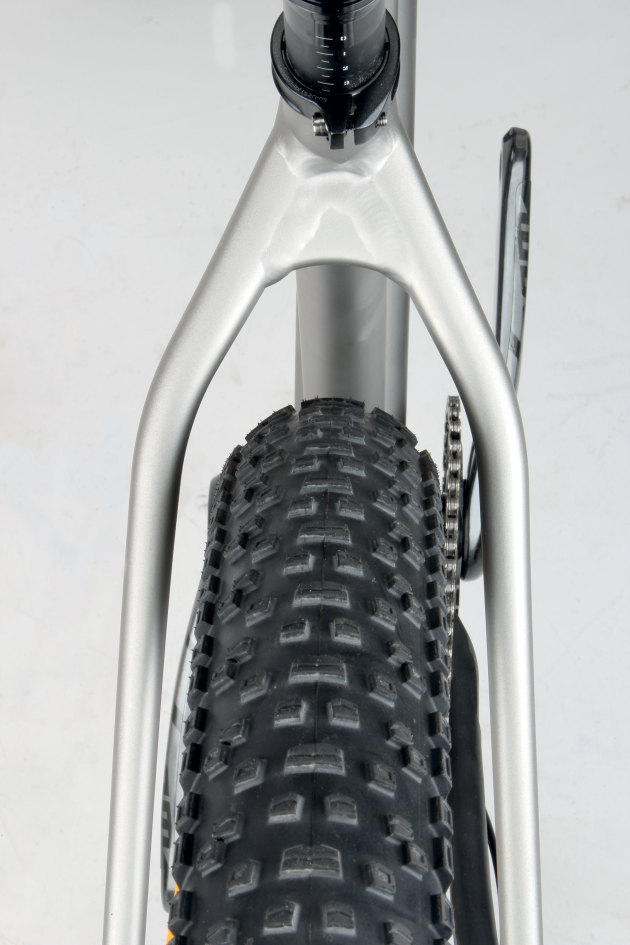
Fat Gains
So what’s the point of these big tyres? These semi-fat newcomers aim to provide benefits in four main areas; traction, floatation, puncture resistance and impact absorption. The first is pretty obvious; when combined with a wider rim, a big volume tyre lets you run lower pressures and this increases the footprint size—more rubber on the trail equals better grip. Greatly reduced pressures – 21psi is the maximum that Specialized recommends – also allow the tyre to mould around trail irregularities, again improving traction.
When the terrain turns is soft, the big footprint means you’re more likely to float rather than bury yourself. Instinctively you may think that fat tyres are slow rolling, but on soft terrain such as sand, they actually offer less rolling resistance.
Wide tyres have always been used to reduce the risk of a pinch flat punctures. Add some really wide rims and the likelihood of flatting reduces further. Finally, the large air filled tyre acts as an inflatable cushion—big, soft and pillowy!
Running such large rubber also increases the outer wheel diameter. The 27.5x3.0 wheels measured 730mm; that’s only 10mm shy of a 29x2.25 cross-country wheel (740mm). A regular 27.5 hoop that’s fitted with a 2.35 tyre stands at 710mm, so on the trail, these new plus-sized wheels have similar roll-over characteristics to a 29er.
Why don’t we just run big tyres on everything, all the time? Weight is a major factor for one, and it’s not just the tyre weight we’re talking about. To perform as intended, wide tyres need appropriately wide rims, and these add further to the overall package weight (unless you throw truckloads of money at carbon rims that is).
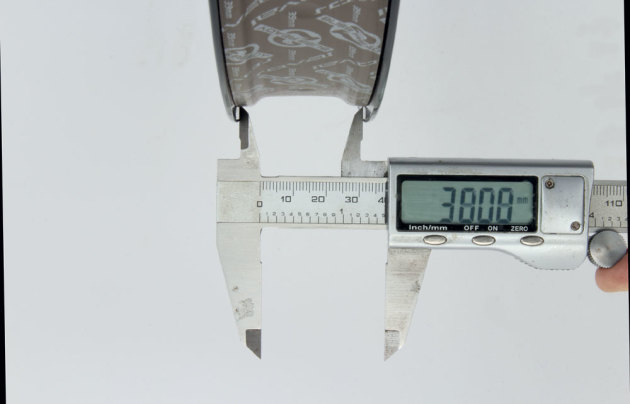
Our Specialized 6Fattie tyres came in at 980g each. This figure surprised us; as it’s about the same as a sturdy 2.35 all-mountain tyre and nowhere near as portly as a true fatbike tread. At 2,160g for the pair, the alloy wheel set is on the hefty side but again it’s not that terrible. Overall the wheels carry a bit over a one kilogram weight penalty when compared to a ‘normal’ 27.5 wheelset of equivalent quality—definitely enough to feel when riding but still light enough to allow for reasonably normal handling characteristics.
Rolling resistance is the second potential drawback. If you’re running really low air pressures, the 3.0 tyres aren’t going to roll as well on smoother hardpack trails (although it could be a different story if the trail is particularly soft or very rocky).
So the 6Fattie or ‘plus’ size isn’t going to be adopted by pure cross-country riders. The width and potential for traction could hold some appeal with gravity enduro or DH riders, the casing on these tyres isn’t the toughest—truly ‘gravity-worthy’ 3.0 rubber will weigh a lot more. Besides, gravity oriented riders usually have plenty of bounce in their suspension and mightn’t appreciate the additional squish from plus sized doughnuts.
However, the new size could sit nicely with those who just go mountain biking because it’s fun. It also has some obvious benefits for those who are looking for an off the beaten track adventure. Specialized is only offering the 6Fattie sizing on their trail oriented Stumpjumper FSR and Fuse models, which suggests they have a similar vision of where these semi-fat bikes belong.
Pick a Price
Our Fuse was the top-end ‘Pro’ model. It’s equipped with all the bells and whistles and sells for $3,999; that’s a fair whack for an alloy hardtail. Thankfully the two more affordable Fuse models retain all of the main defining features; they use the same frame, boost axles, three-inch wide tyres, dropper posts and single ring drivetrains.

The Fuse line kicks off with the Comp at $2,199. For this you get a Suntour Raidon fork, TRP hydraulic discs, a TranzX dropper post, SRAM X.7 and X.5 gears with a 1X10 drivetrain. The WTB Scraper rims are actually wider than what you get on the Fuse Pro; they measure 45mm internally, which should offer better support to the tyres than the 38mm rims that we rode. No doubt the Comp will be a good deal heavier but the main features remain.
Sitting in the middle ground is the $2,999 Fuse Expert. Again it’s a 1X10 set up but with SRAM GX shifters and the fork is a Manitou Magnum Comp. The brakes are SRAM DB3s with a four piston front calliper—a worthwhile upgrade over the TRP brakes used on the Comp.
With our Pro model, the spec was far nicer than what we’re used to seeing on an alloy hardtail. The Reba fork and the wide-range 11-speed SRAM X1/X01 drivetrain made us feel right at home, as did the admirably powerful SRAM DB5 brakes. Carbon cranks add further bling and the Specialized Command Post has one of the tidiest under-bar remotes in the business. It’s even kitted out with a SWAT bottle cage/multi-tool combo and a SWAT chain tool that’s hidden inside the steerer tube. With this spec, our test bike weighed 12.4kg without pedals; a respectable figure given the tyre size and included dropper post.
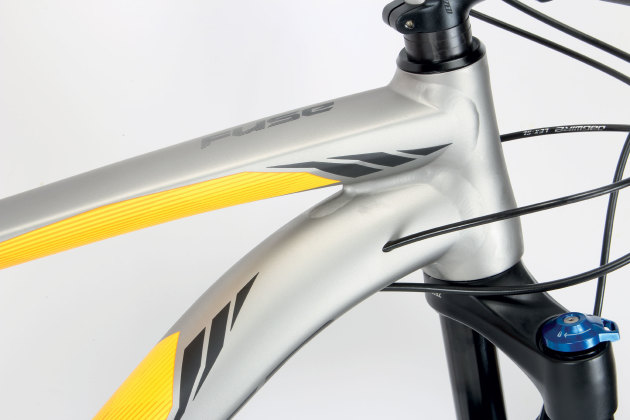
Common Genes
No matter which Fuse you select, the frame is built with the same ‘M4 Premium’ alloy and utilises the same design features. It’s a well-made and surprisingly light frame. Our large weighed 1,990g; there plenty of regular XC oriented 29er frames that come in around that mark, so the Fuse could build into a respectably light machine if you wish.
The major welds are smoothed out for a seamless look and the tube shapes are both purposeful and complex. Eyes are immediately drawn to the distinctive drive-side chainstay; it splits into two arms as it runs behind the chainring and provides a little extra clearance. It combines with the wider ‘boost’ spacing of the drivetrain and allows Specialized to run impressively short 430mm chainstays whilst retaining good clearance for the three-inch rubber.
The geometry is quite progressive for a hardtail; the short rear end combines with a long reach and a slack 67-degree head angle. From a medium size and up, the Fuse ships with a 120mm travel fork and short stems with 750mm wide bars feature throughout. Roll these figures up with the standard issue dropper post and the Fuse is ready to get down and rowdy from the get go. The question is how does all this chubby theory translate on the trail?
In short, this bike is great fun! The Fuse is 100% trail bike, and the big treads really change the entire ride experience from anything you’ve ridden before (assuming you’ve never fat-biked). I think it’s important to set the context here for comparisons sake; my normal ride is a 120/100mm travel 29er dually that sits at the non-race end of the cross-country spectrum—I typically run regular 2.2 inch knobby tyres. It’s a pretty versatile bike that’s comfortable on all kinds of trails. I’ll happily use it for a 100km marathon event and it’s a good climber, but it’s also confident enough to tackle any trail that I have the ability and bravado to ride. The Fuse can do all these things too, but without the pivots and rear shock—it just weighs a bit more and rolls slower.
Prior to riding the Fuse I’d heard people going on about how the big tyres make it similar to riding a shorter travel dually. There are some common benefits, but the way they are arrived at is vastly different—in reality they are poles apart.
In terms of the similarities, the big bag tyres do take the edge off the rough trails. You get less chattery feedback though the hands and saddle, but hit any decent sized square edge and you’re instantly reminded that the Fuse is still a hardtail. Sure, it’s not a brutal stinging hardtail, but the wheels still get bounced around where a dually just sucks up the hits.
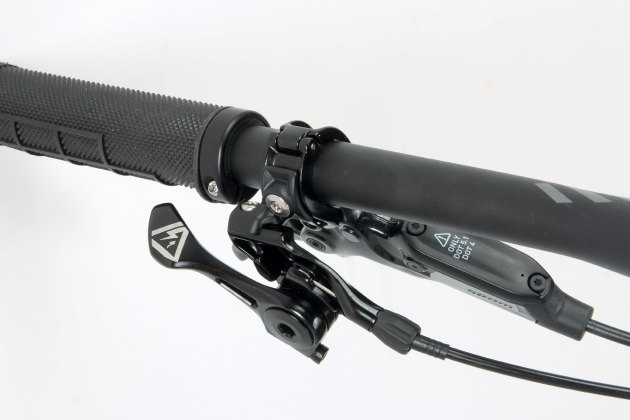
On the flip-side the traction is absolutely unreal; you’ll never want to ride a skinny tyred bike on loose trails again. Run at 15psi they conform to the trail like melting cheese on nachos. Point the Fuse up a loose sandy fire road or technical singletrack and it’s a dead set octopus. The long front end gives you room to find your balance point and the 30/42 first gear allows you to stay seated up the steep stuff. From there the amazing traction does the rest, allowing you to pedal up just about anything. The overall weight ensures the Fuse isn’t a spritely XC race style climber but you’ll still be clambering up the trickiest slopes when all of your skinny tyred riding buddies are off and walking.
Light the Fuse
Point the Fuse downhill and the ride isn’t smooth like a mid-travel dually, not by any stretch, but there is more than one way to tame the trail. The big tyres give you such a confidence boost that you’ll be ploughing into things and letting loose in a reckless manner. It is still possible to pinch flat when riding at speed through the rocks (we did), but convert the tyres to tubeless and it will be very tough to stop. You still bounce and pinball around hardtail-style on rough trails but the inertia and cushion provided by the large air volume tends to get you through some hairy situations. Flick the dropper post remote and the Fuse encourages you to descend like a loon—it quickly becomes addictive! Overall it’s a really capable descender, just in a different way to what we’re accustomed.
While it will handle sand and snow better than a traditional MTB, these conditions remain the domain of the true fatbike. Rather, these plus-style bikes beg to be ridden hard on the kind of trails that you’d usually ride. In this context the Fuse did have its quirks and there was a bit of a learning curve when it came to riding it.
The leach-like grip offered by the big and bouncy low pressure tyres allows you to pitch the bike into turns as hard as you like. However, once your confidence grows and you really begin to push things, you’ll notice a slightly soft and disconnected feel through some turns. This feeling is amplified if you drop the tyres into the low teens. We feel that the rims on the Fuse Pro are a bit too narrow and this introduced more tyre squirm than we’d like.
With 38mm between the bead hooks, the Roval rims aren’t much wider than many new generation all-mountain rims that are designed for regular 2.3 inch tyres. A rim that measures 45-50mm internally would offer better support for the 3.0 inch tyre and reduce the cornering vagueness that I encountered. This would also allow you to further drop the tyre pressures and extract more flotation out of the Fuse for true sand and soft condition riding. This comment won’t apply to the lower priced Comp and Expert models, as they come standard with 45mm wide rims.
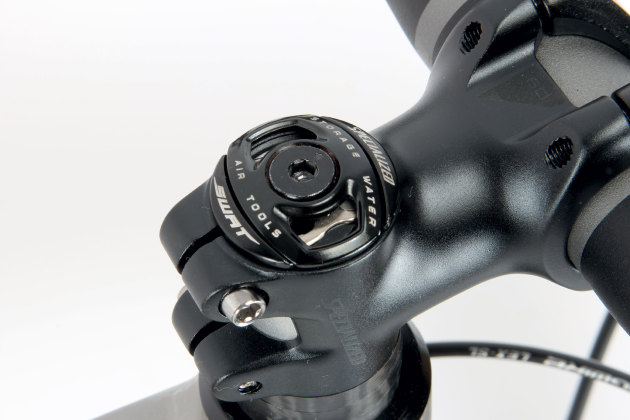
The next quirk is the bounce; the big tyres actually bounce like an inflated ball. Instead of pedal bob, you get tyre bob when riding down the trail! With such a large volume inside, tyre pressure becomes an absolutely crucial factor in setting up the bike. Launch off a drop or slam into a decent sized object and the tyres compress before rebounding back, but unlike your fork there is no damper to control the rebound. Go too soft and the tyres feel mushy and squirm excessively, too firm and you’ll get bucked around like a rodeo rider. Get yourself a decent pressure gauge that reads at low pressures and tune away; trial and error with a little persistence will allow the Fuse to reach its true potential.
One thing we really liked was its versatility. As mentioned earlier, the outer diameter of the 6Fattie wheels is close to that of a traditional 29er. Because of this, the frame and fork will easily accept a regular set of XC wheels. Make the swap and the Fuse instantly transforms into a lightweight, mile-munching marathon bike for less demanding terrain. The only catch is that you probably won’t be able to use your existing 29er wheelset due to the new ‘boost’ hub spacing.
Although the Fuse was far removed from the kind of bike I typically ride, I couldn’t help but take quite a shining to it. It moves along more rapidly than its profile suggests, and I didn’t expect to enjoy going uphill on it as much as I did. Of course smashing it on the way back down never lost its novelty either. For banging around on technical terrain, the Fuse crams a silly amount of ability into a durable and simple package.
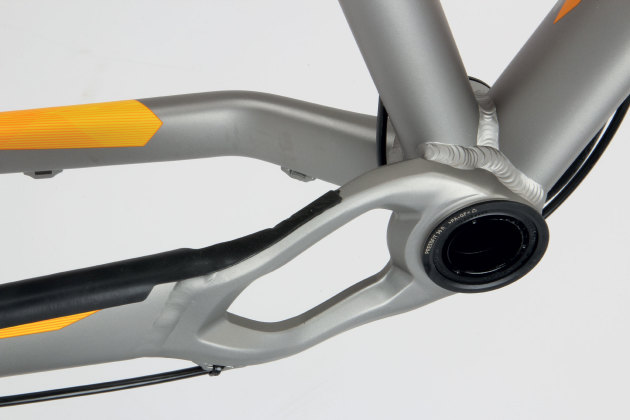
Thumbs Up
Traction!
Simple and tough machine
Goes up and down equally well
Thumbs Down
Heavy and slow feeling on smooth, flat terrain
Spare tyres and tubes hard to come by (for the moment)
Comparatively pricey for the spec

Specifications
Frame: M4 Premium Butted Alloy
Fork: RockShox Reba RC3 120mm travel
Headset: Sealed Bearing Direct Fit
Handlebars: Specialized 7050 Alloy Flat 750mm
Stem: Specialized 3D Forged Alloy 60mm
Shifter: SRAM X1
Front Derailleur: N/A
Rear Derailleur: SRAM X01
Cassette: SRAM XG, 10/42 11-speed
Chain: KMC X11
Cranks: SRAM S-2200 Carbon 30 tooth
Bottom Bracket: SRAM PF30
Pedals: N/A
Brakes: SRAM DB5 Four Piston
Wheels: Roval Alloy 27.5 Tubeless Ready 38mm internal
Tyres: Specialized 6Fattie Ground Control 3.0
Saddle: Body Geometry Henge Comp
Seatpost: Command Post IRcc
Weight: 12.4kg without pedals (Large frame 1,990g)
Available Sizes: S, M, L (tested), XL and XXL
Price: $3,999
Distributor: Specialized Bicycles Australia www.specialized.com
